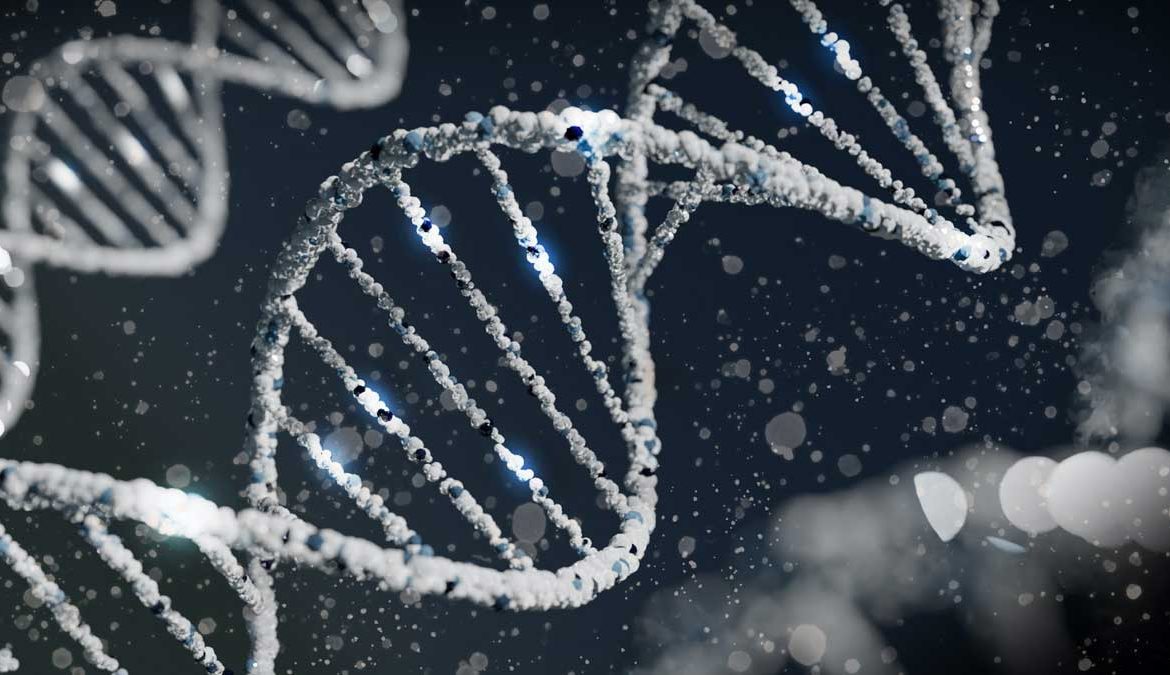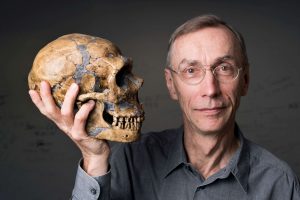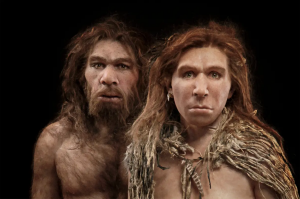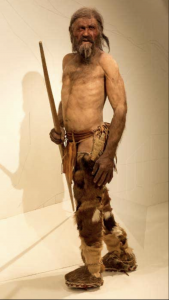
What Did Neanderthals Eat? Did Our Ancestors Suffer from the Herpes Virus?
Ancient DNA (commonly abbreviated aDNA) refers to DNA molecules extracted from the organic remains of living organisms that lived in the past. By isolating this DNA and analysing it with bioinformatics tools, we are able to gain important insights into the past. In a way, it resembles a kind of time travel or a treasure hunt in search of old and small DNA fragments. These old and small bits of DNA provide answers to big questions and raise important new questions. With the help of aDNA, we are trying to find several missing pieces of the historical puzzle, such as past migrations, diseases, epidemics, different cultural traits and genetic interactions between communities. For example, as in the article we shared about 6 years ago about the origin of ancient Aegean people.
The beginnings of ancient DNA studies date back to the 1980s, not a distant past. The isolation of DNA from the dried muscle tissues of a museum specimen of the Quagga (Equus quagga quagga), an extinct zebra subspecies, by Russel Higuchi and his team in 1984 is considered as the beginning of aDNA studies. The DNA residues in this sample had endured 150 years after the animal’s death, and thus could be isolated and sequenced. The following year, Swedish scientist Svante Pääbo isolated DNA from a 2400-year-old Egyptian mummy, marking the first aDNA study on a human species. He showed that studies in this field need not be limited to recent museum materials. Pääbo continued to work in this field and was awarded the Nobel Prize in 2022.

Towards the end of the 1980s, with the development of the PCR (Polymerase Chain Reaction) technique, aDNA studies gained momentum. Especially the studies conducted in the 1990s, in which tens of millions of years of aDNA was extracted from fossils preserved in amber, will probably bring to mind the movie Jurassic Park, based on Michael Crichton’s famous novel. However, these studies, which aroused great interest, were later criticized methodologically and attempts to replicate them failed every time. Sorry Jurassic Park…
In the following years, aDNA was extracted from the remains of extinct species such as Neanderthal humans and mammoths, giving us the opportunity to obtain genetic information about these creatures, which until then had only been studied morphologically. These studies allowed us to learn that mammoths were genetically closer to Asian elephants than to African elephants, and that modern humans carry between 1 and 4% Neanderthal DNA in their genomes.
Another important piece of information that ancient DNA may reveal is the gender of human skeletal remains. The analysis of skeletal remains by using osteological methods (based on bone structure) makes it possible to estimate gender and the age of death. Although these methods are highly accurate, they are not conclusive. Skeletons may not always be preserved well enough to allow gender estimation. This is where aDNA comes into play, allowing us to molecularly determine the sex of skeletal remains. This provides valuable information for understanding the social and cultural dynamics of past communities. For example, a study conducted in 2022 involved the examination of aDNA from a human that was found in a grave, lying on animal skins and with rich goods, only to find that the individual had XXY chromosomes (Klinefelter syndrome). The kinship of individuals buried together, the cooperation between men and women in ancient societies, and whether these communities were matriarchal or patriarchal are among questions that ancient DNA is trying to answer.
It is also possible to read the dietary habits and cultural achievements of ancient human societies from aDNA. The aDNA obtained from 50,000-year-old dental plaques found in caves in Belgium and Spain provided interesting insights into the diet of Neanderthals. According to the results published by the researchers in 2017, the Neanderthal group in Belgium fed on woolly rhinoceros and wild sheep, while the other group in Spain preferred a vegetarian diet. In addition, a sample from the Spanish group showed traces of intestinal parasites, and even more surprisingly, this individual was found to have consumed poplar bark, which has medicinal properties similar to those of aspirin.

How about the difficulties?
The biggest challenge when working with ancient samples is the degradation of DNA over time. Long molecules break into shorter pieces and the bases making up the DNA molecule change over time. Certain regions of DNA, particularly those near the ends of the molecule, are much more susceptible to degradation. On the other hand, these degradations also provide information about the age of the samples.
Environmental conditions such as temperature, humidity and pH value, as well as the presence of microorganisms affect DNA degradation. For this reason, DNA is best preserved in cold climates. The oldest DNA molecules ever isolated belong to such an area, Greenland. However, in 2013, a German research team obtained the mitochondrial genome of a bear (Ursus deningeri) more than 300,000 years old, demonstrating that aDNA can be preserved for hundreds of years in regions outside permafrost. At this point, it is worth noting that mitochondrial DNA degrades twice as slowly as nuclear DNA.
Once the samples have been extracted, storage conditions may also affect the degradation rate of the aDNA structure. Especially fluctuating storage conditions (such as temperature and humidity) are known to increase the rate of DNA degradation.
Another challenge with ancient DNA samples is contamination. One of the most important issues is to ensure that the samples are not contaminated with modern human DNA and microorganism DNA.
It has taken many years to overcome the difficulties in studying ancient DNA. It was only in the late 2000s, with the development of Next Generation Sequencing (NGS) technologies, that studies became standardized and reliable. In 2010, researchers were able to obtain a whole genome sequence from an ancient sample for the first time, and aDNA studies began to gain momentum.
Let’s get to 2023…
Since 2010, when the first ancient genome sequence was obtained, more than 10,000 individuals have been sequenced. In the last 4 months alone, we have gained a lot of new information about ancient times. Ancient DNA of microorganisms from thousands of years ago told us that orally transmitted viruses such as herpes and Epstein-Barr were common among our ancestors. Researchers analysing sweat and skin residue on a Palaeolithic necklace made of deer tusk revealed that the person who wore it around 20,000 years ago was a woman from the same lineage as the Northern Eurasians.

Researchers who succeeded in obtaining the genome of Ötzi, Europe’s oldest natural mummy, in 2012 thought that his ancestors had lived in the Caucasian steppes. However, the fact that Ötzi was more than 5,200 years old put his origins in a deadlock. Because Central European specimens with the same ancestry dated back to 4,900 years ago at most, Ötzi was too old to have the same origins as them. German anthropologist Johannes Krause and his team re-examined the genome of the specimen in the museum in Tyrol, Italy. Their results, published last month, showed that the previously analysed genome was heavily contaminated with modern human DNA and therefore the Caucasian steppe origin was completely invalid. But the new findings are also puzzling. The team found that 90 percent of Ötzi’s genetic heritage came from Neolithic farmers originating from Anatolia, which is still too high for a Copper Age human. They also found that Ötzi had darker skin than previously thought and carried genes that increase the risk of metabolic syndrome, male pattern baldness, type 2 diabetes, and obesity.
The transition of humans from a hunter-gatherer lifestyle to a settled life of agriculture and animal husbandry in the Neolithic is known as the Neolithic Revolution. Of course, it is not possible to summarise the developments of one of the most important milestones in human history and their reflections, in a few sentences. But the questions of where this breakthrough, which paved the way for the domestication of species and the increase in human populations, had started, what triggered it and how it was triggered have been keeping the scientific world busy for a long time. So many different views and models have been suggested that the subject requires a separate in-depth article of its own. A brand new study conducted by researchers from Spain, Sweden, Morocco, Australia and South Africa, recently published in Nature, is set to rewrite history. The analysis of the genomes of Neolithic human populations from three key sites in Northwest Africa, known to have come from different origins, suggests that the changes that took place in the region around 7,400 years ago were initiated by European farmers who immigrated there. In other words, contrary to popular belief, Neolithic communities did not just travel from Anatolia to North Africa following a single migration route; but even then, there was cultural and genetic exchange with the other side of the Strait of Gibraltar. Until that time, the population in the region managed to remain isolated and kept its genetic continuity -gene flow across the Mediterranean only started in the Early Neolithic.
We don’t know what more hidden stories await us in the months and years to come, but every piece of human history that is unearthed will bring along new answers as well as new questions. And that is extremely exciting!
REFERENCES
- 1. https://pubmed.ncbi.nlm.nih.gov/6504142/
- 2. https://www.nature.com/articles/314644a0
- 3. https://researchportal.helsinki.fi/en/publications/a-woman-with-a-sword-weapon-grave-at-suontaka-vesitorninm%C3%A4ki-finl
- 4. https://pubmed.ncbi.nlm.nih.gov/16448217/
- 5. https://www.ncbi.nlm.nih.gov/pmc/articles/PMC5100745/
- 6. https://www.cell.com/cell-genomics/fulltext/S2666-979X(23)00174-X
- 7. https://scitechdaily.com/new-findings-rewrite-the-story-of-the-neolithic-revolution/
